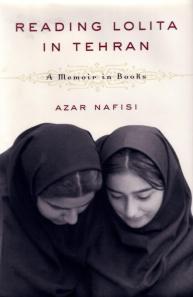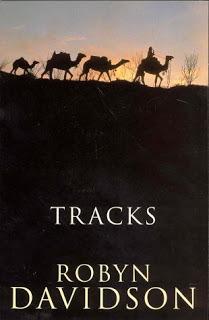It’s been a while since I’ve written about any books, but two of the most recent non-fiction works I’ve read have inspired me to explore the relevance and importance of context in literature.
When a family friend and former bookshop owner recommended Azar Nafisi’s Reading Lolita in Tehran, it came with a comment that it might provide insights into life in Iran and the cultural differences we could face when relating to Iranians now.
Since moving to Melbourne I’ve become friends with quite a few people from Iran and it’s been interesting to see how different people react when they hear that. Particularly – and I kind of hate saying this – people from small towns or regions where there is not a lot of cultural diversity. But you can’t know what you don’t know, which is one of the reasons I love reading non-fiction works.
Anyway, when I was reading Nafisi’s memoir, I found myself not only engaged by the difference in experiences she had living and working in Tehran, but also questioning what it is like their now.

Reading Lolita in Tehran primarily deals with Nafisi’s time teaching Western literature and living in Tehran, between 1979 and 1997. There are insights into the political context, particularly during and after the revolution (1978-81), university regulation, religious beliefs, small rebellions and society in general.
It definitely opened my eyes to how different life can be when you are born in a different part of the world. While it’s easy for us to pick up a copy of Lolita or The Great Gatsby or any other novel considered a classic, at the time that Nafisi reflects on in this memoir it was often a struggle to find these books and even illegal to read some of them.
Still, Nafisi saw value in considering these classic texts of the Western world, and her passion for them saw her fight to teach them and highlight similarities and differences between the cultures of these works and the ones she was experiencing. It’s a fascinating insight into life in Tehran at the time and how our social context can affect the way we read literature.
But I would argue that it’s not an insight into life in Tehran now. It’s from a time in the past and, while there were events that have undoubtedly affected Iran since Nafisi wrote her work, unless we experience life in Tehran firsthand it’s hard to say what it would be like there now.
Change and Cultural Perspectives
What similarities are there between the Tehran Nafisi lived in and the Tehran people know now? What differences are there? How has history affected this city and country in the years between?
These questions have always fascinated me when it comes to context and history. But our perspectives on these questions are also shaped by our own contexts. I have no experience of Tehran, but I do have an opinion on it based on what I’ve read and the Iranian people I’ve spoken to. That opinion is (and should be) constantly evolving the more I learn.
I’m still aware, however, that someone who has lived in Tehran would read Nafisi’s book with a different set of eyes and thoughts on it. Maybe they would agree, maybe they wouldn’t and maybe they would see more of what has changed and what has stayed the same within that culture.
These things are what I experienced when I picked up another memoir, Tracks by Robyn Davidson. It’s the story of Davidson’s nine-month journey from Alice Springs to the west coast of Australia (ending up at Hamelin Pool, some 750 kilometres from Perth).

In Tracks, we hear about Davidson’s two-year preparation for the journey, which started with a move to The Alice in 1975. She writes about her experience as a city girl moving to the outback, her journey to learn more about camels and finding the four that would travel with her and her faithful dog Diggity.
She also writes about her experience a woman in the Australian outback in the late 70s, and her observations of how Aboriginals were viewed and treated. While the majority of the book, to me, was about Davidson finding a relationship with the land (and this country), there were some very fascinating and poignant insights into Australian life.
Some of what she wrote about different Indigenous communities (and they ways they were viewed), for example, sounds like they could have been pulled from discussions today.
“It also became apparent to me that the majority of whites now involved with the Aborigines are fighting alongside them to protect what is left of their lands and their rights, and eventually to reach the point where the blacks are autonomous,” she observes at one point.
“Whether this is possible, given the rural white backlash, the racist attitudes of Australians generally and the genocidal policies of the present government, and given that the rest of the world seems neither to know nor care what is happening to the oldest culture in the world, is a doubtful thing.”
I’ve heard many people say similar things over the past few years, though perhaps using slightly different language (people appear to be more cautious about using terms like “blacks” and “whites” in my experience).
I think just as many people would agree and disagree with her statements now as they would have done then. The big difference, as far as I can tell, is that there does now seem to be much more open conversation about Aboriginal culture and the socio-political issues they face.
The government has apologised for many of the wrongs done to Aboriginals since colonization (for what that has been worth). There are ongoing discussions and concerns. People actually do care about what is happening to and for Aboriginal people, and I got the impression that the concern I’m aware of now was incredibly rare at the time Davidson was writing about her experiences crossing Australia.
My point is that some of Davidson’s observations still ring true today, while others are not as relevant now. And I have a stronger opinion about it than I did with Reading Lolita in Tehran because I do live in Australia. I wasn’t alive when Davidson started her journey, but my opinion is informed by the Australia I’ve grown up with.
As a result, I know firsthand what I see as different and what I see as the same in our culture. But someone who has never been to Australia, who read this book, would get a very different picture of this country if they took Davidson’s observations as true for today. I think the same can be said for me or anyone else reading a memoir like Reading Lolita in Tehran and assuming that is what life in Iran is like.
There are many reasons that I love reading, but one of them is to learn more about people and the world, both now and in the past. Memoirs can provide unique insights into a particular time and place (then and now), but above all they provide insights into the life of one person. Through that person (the author), I learn more about myself and the world around me.
Filed under: Australian, Culture, Literature, Opinion Tagged: Australia, Azar Nafisi, Iran, Memoir, Reading Lolita in Tehran, Robyn Davidson, Tehran, Tracks

